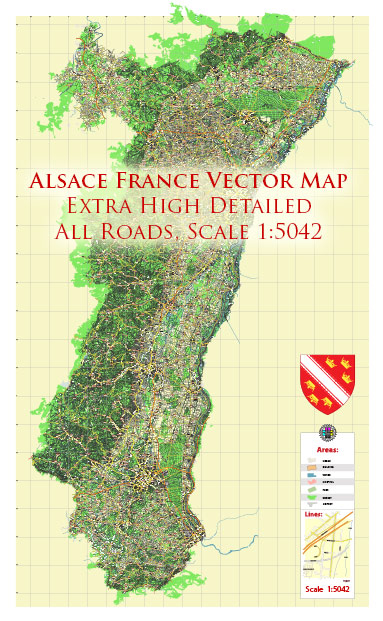Alsace, a region in northeastern France, has a rich history of urban development that reflects its location at the crossroads of Europe and its complex historical background. The region has been shaped by various civilizations, wars, and cultural influences over the centuries. Here’s a brief overview of the history of urban development in Alsace:
- Roman Era: The history of urban development in Alsace can be traced back to the Roman period. The Romans established several settlements in the region, such as Colmar (Colonia Claudia Ara Agrippinensium) and Strasbourg (Argentoratum). These settlements served as important centers of trade, administration, and culture.
- Medieval Period: During the early Middle Ages, Alsace was a part of the Holy Roman Empire. This period saw the development of many charming towns and villages, each with its own unique character. The architecture from this time still influences the region’s urban landscape, with timber-framed houses, cobblestone streets, and town squares.
- The Strasbourg Cathedral: One of the most iconic landmarks in Alsace’s urban development is the Strasbourg Cathedral (Cathédrale Notre-Dame de Strasbourg). Construction of this masterpiece of Gothic architecture began in the 12th century and continued for centuries. The cathedral has had a significant impact on the city’s development and continues to be a symbol of Strasbourg.
- The 30 Years’ War and Change of Sovereignty: Alsace experienced a series of conflicts during the 17th century, particularly during the Thirty Years’ War (1618-1648). This period of strife resulted in the region changing hands multiple times between France and the Holy Roman Empire. These political changes had a lasting impact on the urban development of Alsace.
- French Influence: In the late 17th century, Alsace became a part of France during the reign of Louis XIV. French influence on the region’s architecture and urban planning became more pronounced, with the development of grand squares, boulevards, and architectural styles characteristic of French cities.
- Industrial Revolution: The 19th century brought significant industrialization to Alsace, especially in the city of Mulhouse. This led to the development of factories and industrial infrastructure, altering the urban landscape.
- Post-World War I and World War II: Alsace experienced the devastation of both World War I and World War II, which resulted in the reconstruction and redevelopment of many of its towns and cities. Strasbourg, for example, underwent extensive restoration and modernization after World War II.
- European Union Influence: Strasbourg is notable for being one of the main seats of the European Union institutions. The presence of EU institutions has had a notable impact on the city’s urban development and infrastructure, further cementing its role as a European hub.
Today, Alsace boasts a blend of architectural styles and influences from its diverse history, with well-preserved medieval towns, Baroque elements, and modern developments. The region continues to evolve while maintaining its unique cultural and historical identity, making it a fascinating place to explore the history of urban development in France.


 Author: Kirill Shrayber, Ph.D.
Author: Kirill Shrayber, Ph.D.